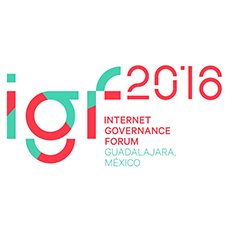Bridging digital device gap the blind through technology
9 Dec 2016 11:45h - 12:45h
Event report
[Read more session reports and live updates from the 11th Internet Governance Forum]
The purpose of this workshop, organised by Electronic Transaction Development Association (ETDA), was to showcase an innovative solution designed in Thailand to help people who are blind read, to promote inclusiveness in line with the theme of IGF 2016.
Giving a brief introduction, the moderator, Ms Atcharaphorn Mutraden, said the application, called Read for The Blind, helps bridge the gap between technology and the people who have difficulties and volunteers to help them access the information and communications. She backed the need for the solution based on a research outcome that points to the fact that the blind constitute a significant proportion of the Thailand’s population. The application, according to her, helps people to read out and record articles, and books and upload onto the cloud and subsequently share with people who are blind, so they can read and improve their literacy.
Mr Natwut Amornvivat, co-founder and CEO of Read for the Blind, took his turn to provide more information on the application as well as provide a demonstration of how it works. He started by helping the audience imagine how the life of the typical blind person is, their dream and aspirations and how the lack of an easy means of having access to audio books make it difficult for them to be part of mainstream education.
Amornvivat then described the components of the app, especially the human aspect in terms of the volunteers who who would help record the books and articles to generate content into the cloud server. He could not illustrate through a live demonstration, however he showed a video that demonstrated the need for the application, the technology driving the application, the mobile platforms that supports the application as well as how to practically upload the files and in what formats. He sought feedback from the audience about the application and was encouraged that the application could be used in other countries, even though some tweaks would be made first in terms of menu and language preferences.
Ms Cholatip Yimyong, National Reading for the Blind and Disabled of Thailand Association Foundation, who is visually disabled and part of the Read for the Blind project, also made a very useful contribution to the presentation by giving valuable replies to the questions that the audience asked.
The moderator summarised and closed the session.
by Jacob Odame, Internet Society Ghana
Related topics
Related event

